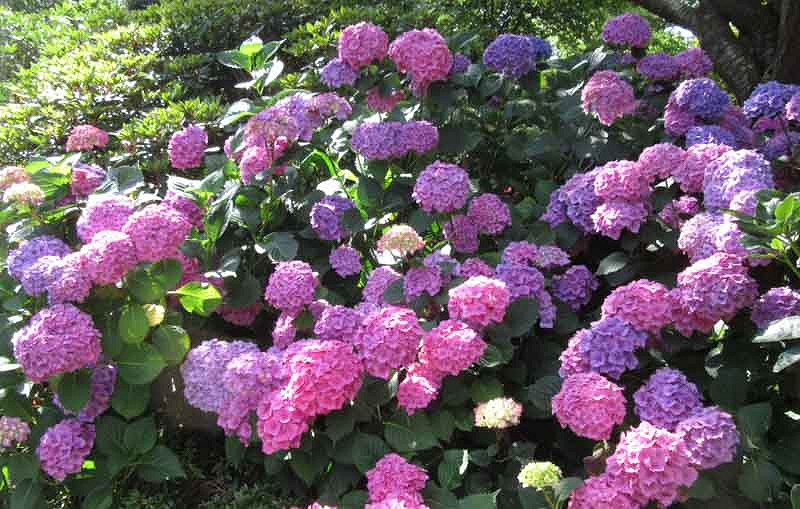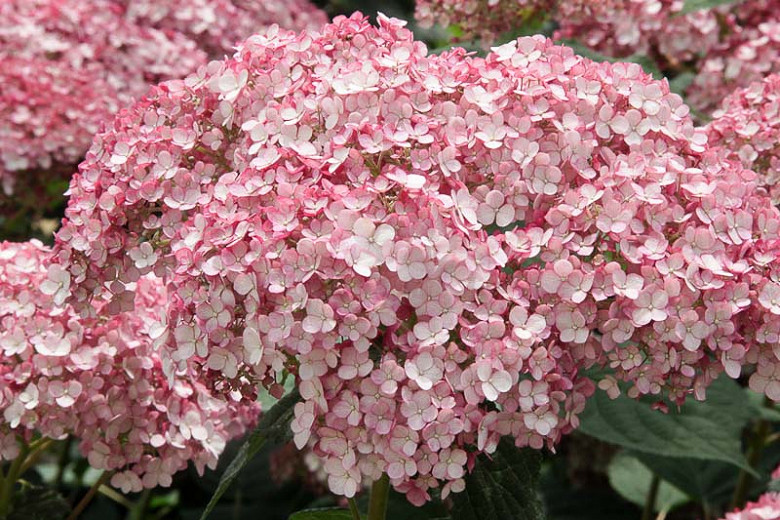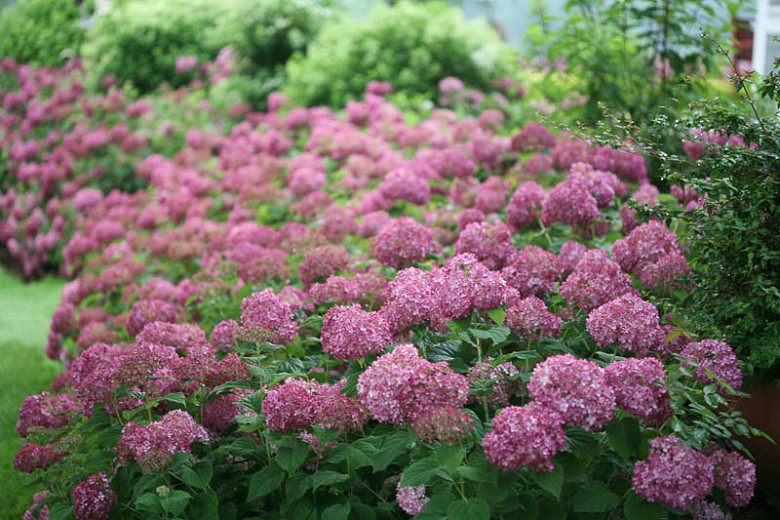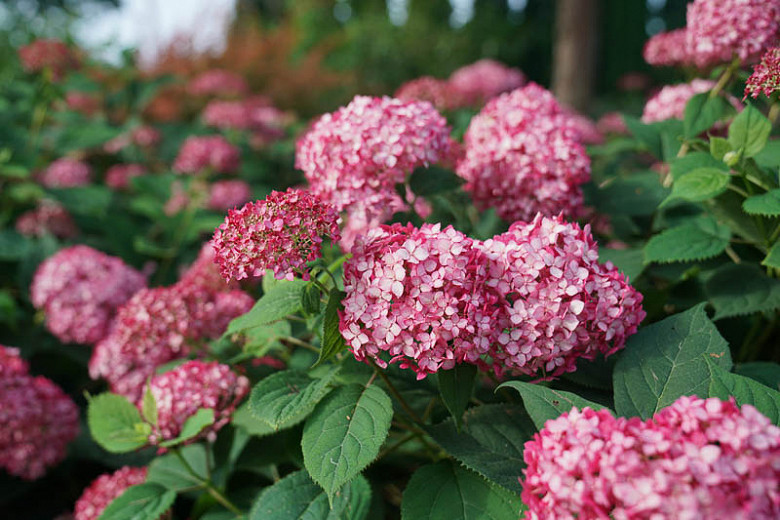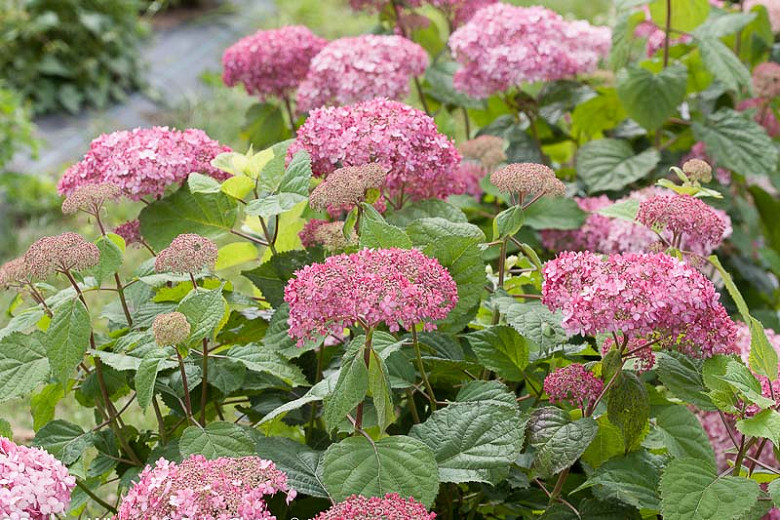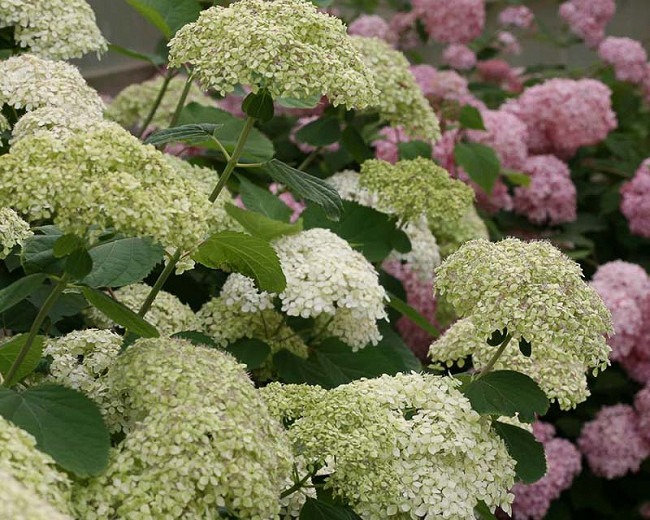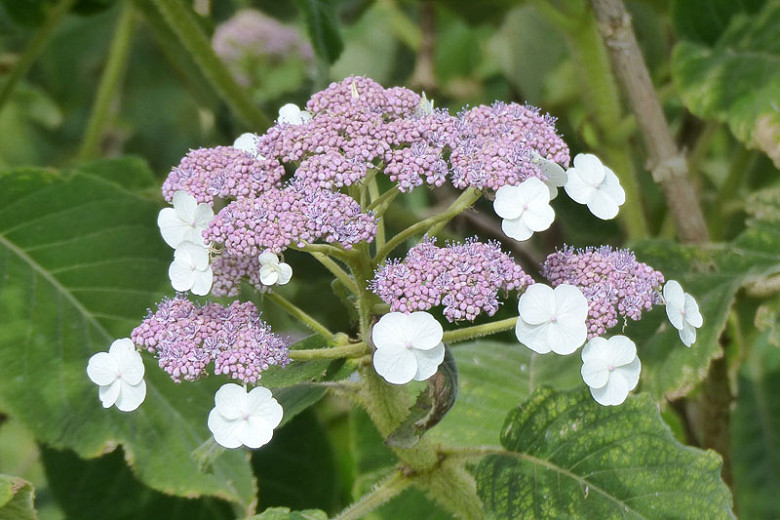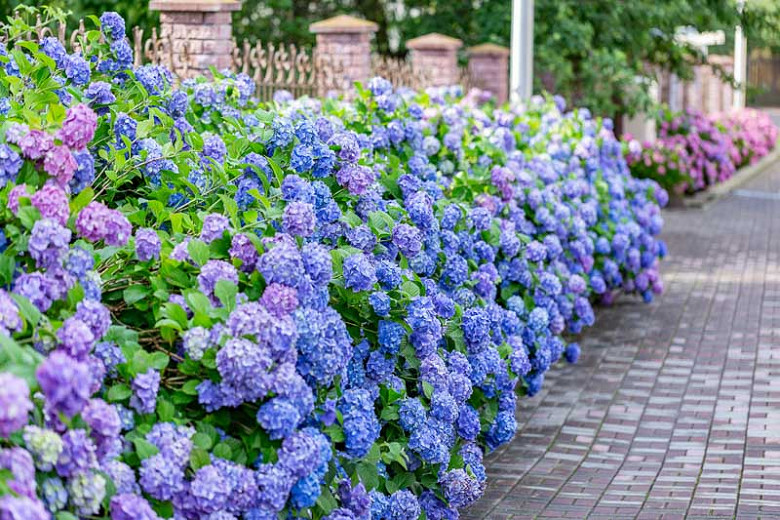Hydrangea macrophylla Altona
Very floriferous and smothered in bloom, Hydrangea macrophylla 'Altona' produces large, rounded flower heads, up to 8 in. across (20 cm), densely packed with French blue or rosy-pink florets, depending on the soil pH. In soils that are neither strongly acid nor alkaline, the blossoms turn a charming pinky-mauve shade with white centers. Blooming from early to late summer, its flowers change to lovely antique colors in the fall, extending the season of interest of this mophead hydrangea. The profuse blossoms appear on a compact, bushy plant, adorned with broadly ovate, dark green leaves. 'Altona' is happy in sun or shade and is a perfect choice for windy or coastal gardens. Popular as an indoor plant, it looks equally fabulous as a specimen or in small groupings in the garden. Great choice for flower arrangements too!
- Recipient of the prestigious Award of Garden Merit of the Royal Horticultural Society for its noteworthy qualities
- This deciduous shrub has a round, bushy habit, typically growing up to 4-5 ft. wide (120-150 cm)
- A sun to part shade lover, it is best grown in rich, medium moisture, well-drained soils.
- No serious pest or disease issues. Watch for bud blight, bacterial wilt, leaf spot and mildew.
- Perfect from foundation plantings to container plantings. Massed in a sheltered location or as an accent plant. Effective as an hedge and makes excellent cut flowers too!
- Remove spent flowers to promote new blooms.
- To change the color of your Hydrangea, add aluminum sulfate to the soil to make the flowers bluer or add lime to the soil to make them pinker. Treatment should occur ahead of time (late fall or early spring)
- This beautiful deciduous shrub should be pruned after flowering by cutting back the stems to a pair of healthy buds. Prune out weak or winter-damaged stems in early spring.
- May cause mild stomach upset if ingested, contact with foliage may aggravate skin allergies. Wear gloves and other protective equipment when handling.
- Toxic to dogs, toxic to cats, toxic to horses.
Requirements
| Hardiness | 6 – 9 |
|---|---|
| Heat Zones | 6 – 9 |
| Climate Zones | 3, 3B, 4, 5, 6, 7, 8, 9, 14, 15, 16, 17, 18, 19, 20, 21, 22, 23, 24, H1 |
| Plant Type | Shrubs |
| Plant Family | Hydrangea |
| Exposure | Full Sun, Partial Sun |
| Season of Interest | Summer (Early,Mid,Late)Fall |
| Height | 4' – 5' (120cm – 150cm) |
| Spread | 4' – 5' (120cm – 150cm) |
| Spacing | 60″ (150cm) |
| Water Needs | Average |
| Maintenance | Low |
| Soil Type | Clay, Loam, Sand |
| Soil pH | Acid, Alkaline, Neutral |
| Soil Drainage | Moist but Well-Drained, Well-Drained |
| Characteristics | Dried Arrangements, Cut Flowers, Plant of Merit, Showy |
| Garden Uses | Beds and Borders, Hedges and Screens, Patio and Containers, Small Gardens |
| Garden Styles | City and Courtyard, Coastal Garden, Informal and Cottage, Traditional Garden |

